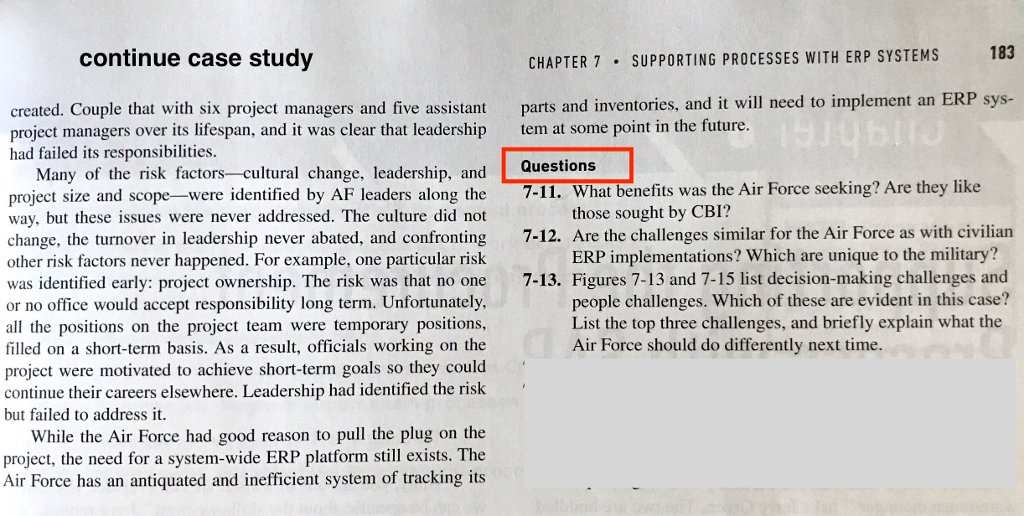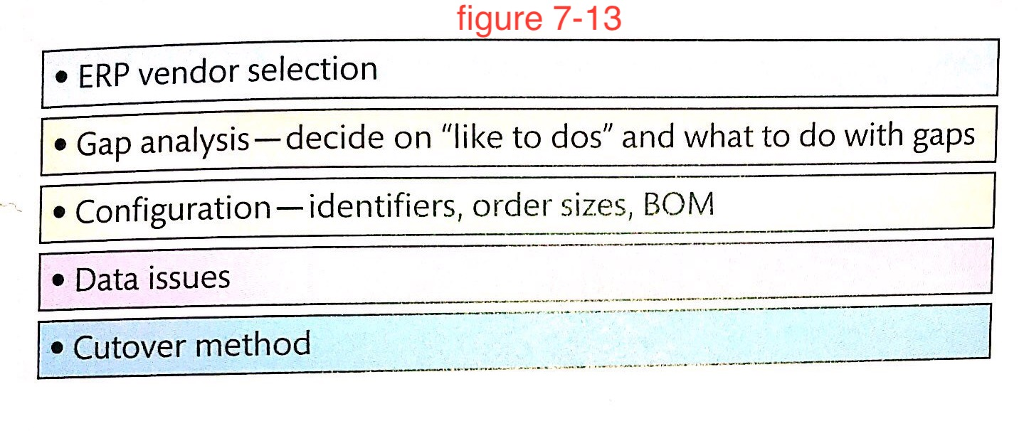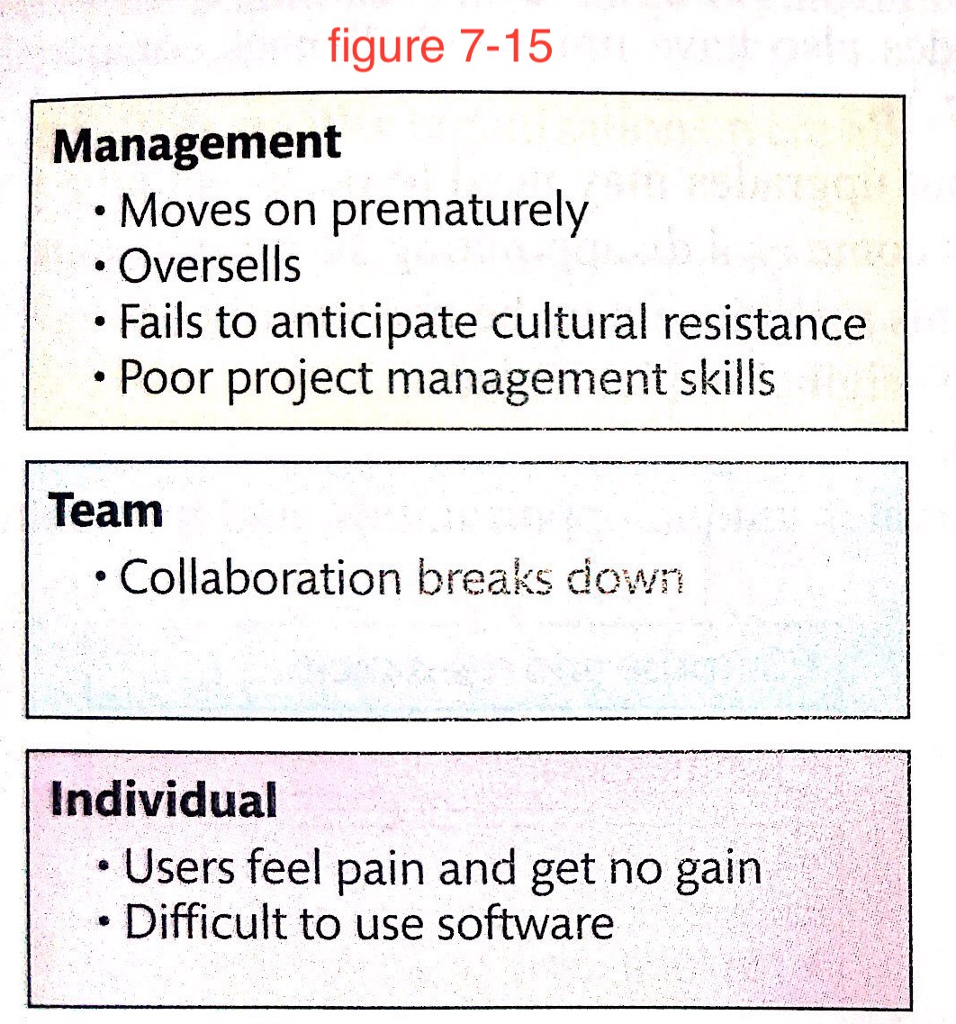


 Answer each question on one parapghraph 7-10 , 7-12 and 7-13
Answer each question on one parapghraph 7-10 , 7-12 and 7-13
U.S. Air Force ERP Bonirec case study The U.S. Air Force operates a very large supply chain to sup- slowed progress. Air Force leaders did not execute a thorough port its flying operations. This logistics mission, composed of a gap analysis, too many leaders supervised the project, and no one workforce of more than 90,000 individuals, is managed by Mate- seemed to specify the desired capabilities of the new ERP system. riel Command (AFMC). AFMC is responsible for the purchasing, Finally, as the project lurched forward, far too much customizat tracking, and use of thousands of parts and millions of gallons of was built into the ERP system as Air Force managers insisted that fuel at more than 150 installations worldwide. AFMC supports the the new ERP system needed to support existing processes rather Air Force, an organization with a yearly budget of about $165 bil than adopt the inherent processes offered by Oracl lion with about 300,000 service members. This makes it about the size of General Motors or General Electric After numerous setbacks and several failed attempts to restart the program, in November 2012, the Air Force canceled the entire proe e spending $1.03 billion. The Air Force concluded that Senate investigations revealed three main problem areas Air Force leadership began to notice the marked improvement in logistics enjoyed by other large organizations the new system had provided no significant military capability. when they adopted an ERP system. Two years later it launched the beginning of its own ERP implementation, a system grandly titled the Expeditionary Combat Support System (ECSS). The ECSS was to be an Oracle system designed to replace 240 outdated intormation.Inadequate mitigation of identified risks at the outset systems used throughout the United States and overseas with a . Cultural resistance to change within the Air Force .Lack of leadership to implement needed change le ERP system. The proposed system would be about 30 times Military culture makes changing processes difficult. Investi system ever built by the Department of Defense larger than any and 100 times larger than any in the Air Force. Not only would the supply chain become more efficient and better managed, the new ERP would help the Air Force comply with new regulations requir-those parts flowed between bases in order to use the ERP sy gators found entrenched civil servants had a strong pride in how and how tem effectively, a disruptive change. They had to be willing to things are done, and military officers too quickly rotated bet jobs. The AF had to change the way it purchased parts ing federal agencies to produce auditable books by 201 Unfortunately the implementation of ECSS stumbled at nearily change their business processes, but no culture of business process every step. The Air Force failed to specify achievable objectives improvement existed. for the system, justifying the system with simplistic statements about how many different computer systems would be integrated. ence with ERP systems Sadly, the number of information systems to be replaced from 240 initially to more than 900. in AF leadership failed. The leadership team had no prior ex , process change, or IT governance o. Other self-inflected injuries 100 times larger than any system the Air Force had success grew were in over their heads. As mentioned, the system was



 Answer each question on one parapghraph 7-10 , 7-12 and 7-13
Answer each question on one parapghraph 7-10 , 7-12 and 7-13 





